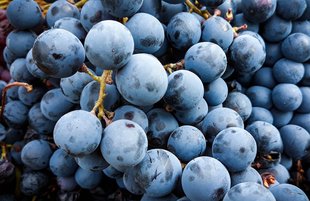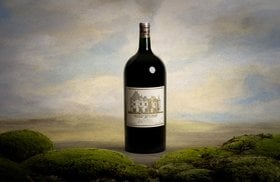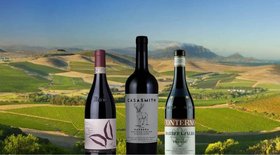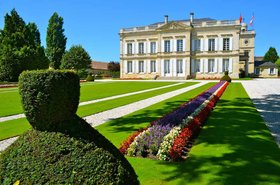Grenache (Wine Regions, Best Wines, Prices 2025)
Curious about Grenache wine and the best bottles to buy for your collection?
The Grenache grape is the backbone of many beloved red blends of the southern Rhone Valley and the silky rosés of Provence! This versatile varietal grows all over the world - from arid Australia to the California coasts - creating wines with very different expressions of the grape.
Despite being a widely planted one, it has been underestimated just as a workhorse grape for long. But today’s talented winemakers have reinvented it beautifully to create luscious red wines
In this article, let’s explore all about Grenache — its history and reinvention, where it grows, the wine styles, and the finest Grenache wine bottles for your cellar. We’ll also show you the easiest way to Invest In Fine Wines!
Further reading
- Add sparkle to the season with some of The Most Enchanting Christmas Wines!
- Check out other Sophisticated Red Wines that should find a place in your wine collection!
- As for whites, here’s an exhaustive guide to The Most Elegant White Wines To Buy right now!
All About Grenache
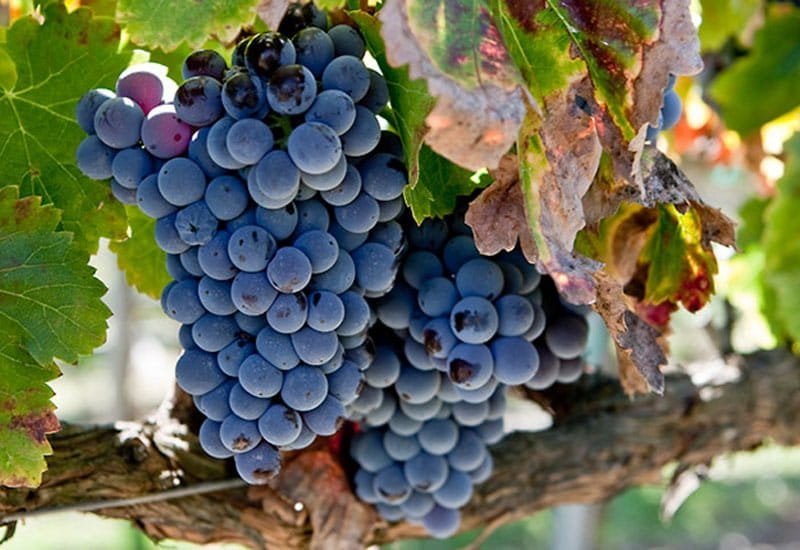
Grenache is a versatile red wine grape that’s easy to grow and produces large quantities of fruit. Known as a workhorse grape, it's typically used as a blending component in wines, though Grenache varietal wines are common too.
Interestingly, there’s also a Grenache Blanc grape that goes into some of the white wines of southern France.
You’ll come across many names of Grenache in different parts of the world. What is Grenache in France is Garnacha or Garnatxa in Spain. In Italy, this grape variety is referred to as Cannonau. Tinto Aragones, Alicante and Lladoner are some other names you might encounter.
Further reading:
- Meanwhile, pick up some of the best Moscatos in the world using this ultimate guide to sweet Moscato wine!
- To know which glass to sip from, use this handy guide on how to pick the right wine glass for your wine!
A Brief History of Grenache
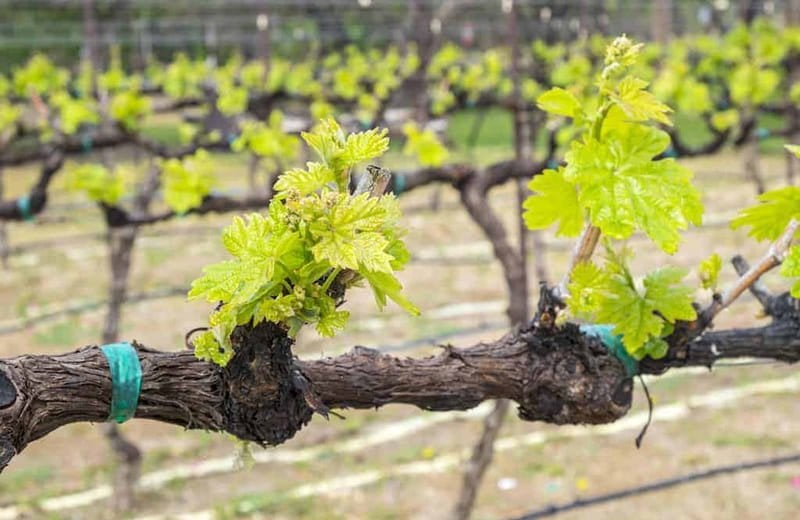
Grenache has been around for centuries, and there’s an ongoing debate about where it originates. Many sources point to the Aragon region in northern Spain, while others say it originated in the Mediterranean island of Sardinia, Italy.
Regardless of its origins, this is a grape that has traveled far and wide!
By the 1800s, it was grown in the French regions of southern Languedoc-Roussillon and Rhone Valley. In the 1900s, it was widely planted in Spanish Rioja to replace vines devastated by the Phylloxera epidemic.
It was one of the first varietals introduced to Australia in the 18th century, becoming a key component of sweet fortified wine.
And in 19th-century California, this grape varietal was valued by winemakers as a high-yielding vine and was used as a blend for sweet jug wines.
The Rhone Ranger movement in California reignited interest in the grape in the 1980s with the production of premium varietal Grenache and Rhone-style blends. These were modeled after the Grenache wines of Chateauneuf-du-Pape. (The Rhone Rangers are a group of
American winemakers dedicated to promoting the use of Rhone Valley grapes like Grenache, Syrah and Carignan.)
In Spain today, age-worthy Grenache wines are made mainly in Rioja and Priorat.
The Grenache Grape and Viticulture

The Grenache vine produces wine grapes with thin skin. Like many ancient grape varieties, Grenache has many mutations that are genetically identical to the parent but look different.
The Many Faces of the Grenache Grape
Here are some variations of the Grenache grape:
- Grenache Noir: This is the original Grenache, and the most common one. This red wine grape produces medium-ruby wines and is also used for rosés.
- Grenache Blanc: As the ‘blanc’ implies, this is the white mutation of Grenache. White Priorat wines come from this grape, and it’s an important blending component in white southern Rhone wines.
- Grenache Gris: This grape is named after its grayish-pink color. It’s mostly grown in Roussillon of southern France for making dessert wine like Banyuls, Maury and Rivesaltes. It’s also used for a pale Grenache rosé and lightly tinted white wines.
- Hairy Grenache (Garnacha Peluda): This grape variety has a fuzz on the underside of its leaves. It produces wines of lower alcohol and higher acidity compared to the common Grenache.
- Garnacha Tintorera: This is another name for the teinturier grape Alicante. (Teinturier grapes are red-fleshed grapes, often used to add color to a pale wine.)
- Marselan: This is a cross between Grenache and Cabernet Sauvignon, created in 1961.
Read more: Want to know How Many Calories Are In Your Glass of Wine? Here’s the guide you’re looking for!
The Grenache Vine and Viticulture
The Grenache vine is resistant to wind and drought. It has a strong wooden frame and often grows as a freestanding bush vine.
The vine likes hot, well-drained, dry soils but is relatively adaptable to all kinds of vineyard terroir. These characteristics make it suited to the dry, warm and windy Mediterranean just as well as the arid climates of California and South Australia.
The Grenache berry ripens late in the growing season and is often one of the last to be harvested from the vineyard.
This long ripening creates high sugar levels, resulting in wines with substantial alcohol levels, often with at least 15% ABV.
Winemaking with Grenache

Grenache is a sweet, fruity, aromatic grape with low tannin. This makes it an easy blending partner to the meatier, more tannic varieties like Syrah (Shiraz) or Mourvedre.
A popular red blend known as GSM (the acronym for Grenache, Syrah and Mourvedre) is a classic in regions like the southern Rhone Valley.
Some Grenache based wine bottles are made for early consumption as the grape tends to oxidize easily.
The Grenache based “Port style” wines of Australia and vins doux naturels of France are fortified to protect them from oxidation.
Also read:Want sparkling wine? Here are the most incredible Sparkling Wine bottles you should go for! As for storing them perfectly, check out the coolest ideas to design a Wine Cellar in your home!
Grenache Wine Regions and Their Wine Styles

Grenache is made into many different styles and colors, from sweet to dry, red to white. Let’s look at some major Grenache wine regions and their wine styles.
1. Southern Rhone
Most Grenache based wines from this region are made in the Côtes du Rhône AOC. You can find both varietal Grenache and blends, typically with Syrah, Carignan or Mourvedre. These are wines with moderate tannin and red fruit, herbal aromas.
The renowned Chateauneuf-du-Pape appellation also lies in Southern Rhone, producing intense, smokey Grenache wines with licorice notes. The Grenache based wines from Gigondas or Vacqueyras appellations have a similar style.
2. Provence
Provence in France is synonymous with rosė wine, and some of the most popular rosés are Grenache-based. These wines often have strawberry and orange zest flavors.
3. Languedoc and Roussillon
The warm climate in Languedoc produces the juicy, full-bodied, GSM red blends. The whites made from Grenache Blanc are usually unoaked and for early drinking.
Meanwhile, the popular southern France vins doux naturels are made in Roussillon. These are sweet fortified dessert wines usually made from Grenache Blanc, Grenache Gris and Grenache Noir.
4. Priorat
The prestigious Spanish Garnacha wines of Priorat are usually blended with Cariñena, producing a powerful, spicy wine that ages well. White Priorat comes from Garnacha Blanca, and has floral and mineral notes.
5. Rioja and Navarra
In Rioja and Navarra in Spain, the Garnacha grape is used to add aroma or soften the more tannic Tempranillo grape. It also goes into the making of pale pink Spanish wines of fleshy, red fruit called rosado or clarete.
6. Calatayud
Calatayud in southwest Aragon, Northern Spain, is known for its big, bold Garnacha-based red wine. Those sourced from vines older than 50 years are classified as Calatayud Superior— a rare, sought-after wine.
7. Sardinia
Sardinia produces a rich, Italian red wine called Cannonau di Sardegna, which is 90% Cannonau (Grenache). Rosės and sweet, fortified versions Cannonau di Sardegna are also made here.
8. California
Grenache has been grown in California since the 1880s. Though previously used to make low-quality jug wines, more Central Coast winemakers are now producing top-notch varietal Grenache.
9. Australia
In Australia, Grenache is usually used as a component of the GSM blend or goes into the making of sweet fortified wines.
Barossa Valley and McLaren Vale are home to some very old Grenache vines that date back to the late 1800s. These estates are known for richly textured Grenache-based wines.
10. Other regions
Grenache is also grown in many other wine regions, like South Africa, Chile, Argentina and even China.
More Interesting Facts about Grenache
Chateau Rayas Chateauneuf-du-Pape Reserve
A grape as old as Grenache is bound to have several interesting stories linked to it!
1. A decline in Grenache acreage
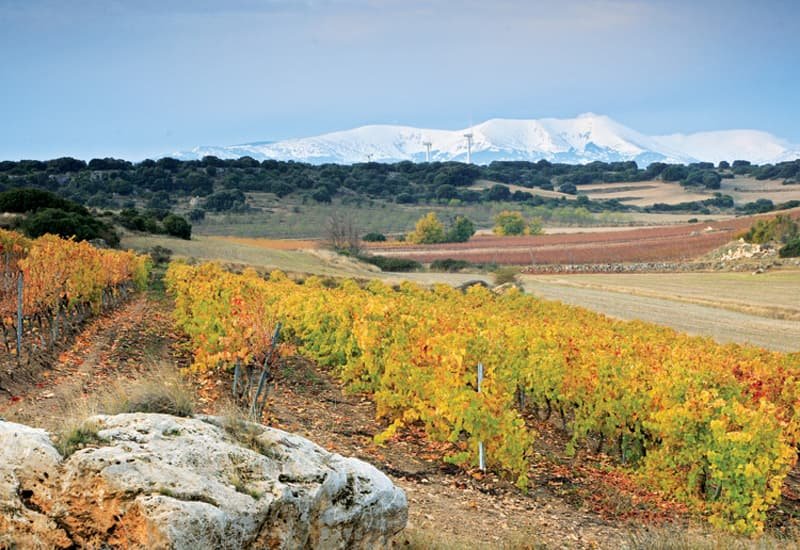
Back in the 1970s and 1980s, Grenache acreage was close to 800,000 acres globally (2.5 billion bottles of wine) per year.
But the acreage has gone down in recent times, especially in Spain, where nearly half of the plantings have been replaced with Cabernet, Syrah, Merlot and Tempranillo. This is partly due to a few low-quality Grenache wines made recently.
2. Marselan and China

The Marselan grape (a Grenache-Cabernet Sauvignon hybrid) is grown in several Chinese wine regions. Marselan red wines have incredible complexity, making it very popular in China and the rest of the world.
3. The priciest Grenache wines
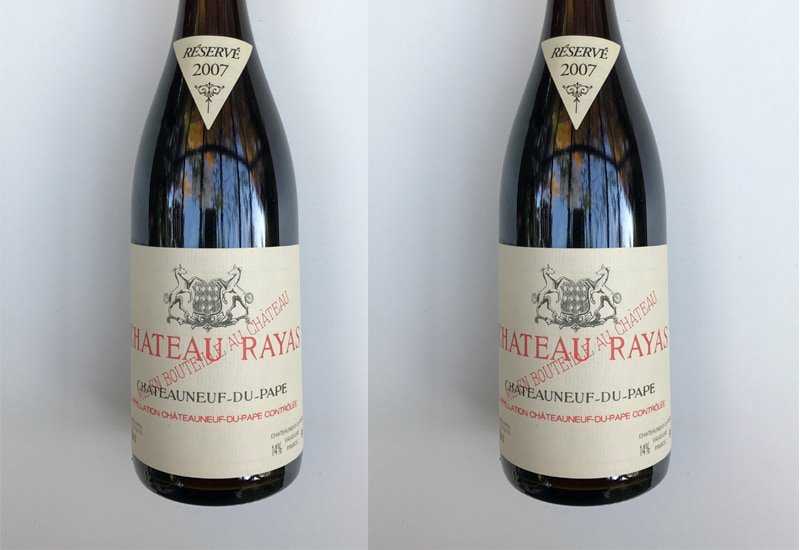
The finest Grenache wines can cost quite a sum - especially the bottlings from Château Rayas in Châteauneuf-du-Pape (can cost between $600 to $1,000 or more) and the Alvaro Palacios L'Ermita Velles Vinyes from Priorat.
4. Secret ingredient in Burgundy
In 17th-century Burgundy, Grenache from next door Rhone were blended into Pinot Noir to improve its flavor. At that time, it wasn’t illegal to do so, though today, this type of blending would cause a massive scandal in the wine world.
5. Tablas Creek and Grenache
The winemaker Tablas Creek Vineyards in Paso Robles is credited for planting the first Côtes du Rhône Grenache varieties in the US.
How Does Grenache Taste?
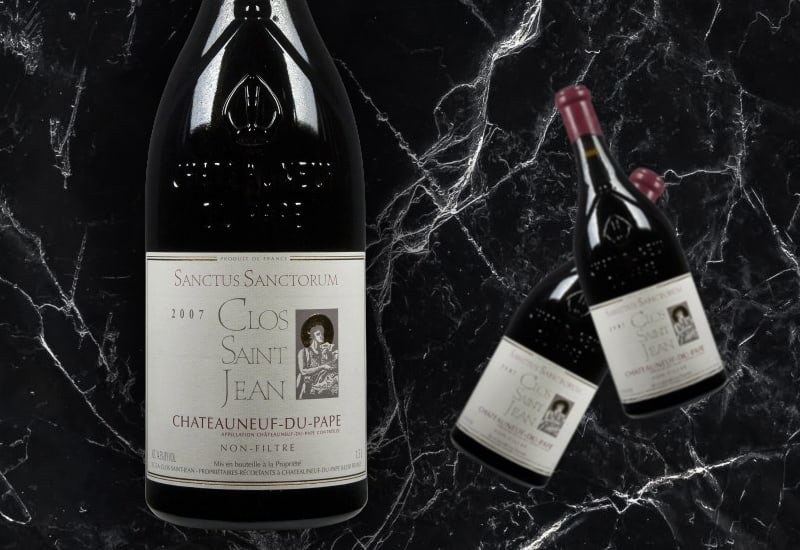
Grenache is a naturally sweet grape, creating wines with ripe fruit flavors like red and black cherry, raspberry, with a white pepper spice note. You’d hear the flavors “rolled candy” and “candied violets” often associated with this wine.
The wines are typically medium-bodied due to the high alcohol. This can be somewhat unexpected as it’s lighter and semi-translucent in color.
The taste of Grenache is terroir-driven.
Here are some examples to illustrate this:
- French Grenache: The Grenache-based wines of Southern Rhone often taste of cherry fruit with smokey herbal notes of lavender, tobacco and oregano. The slightly cooler region of Rhone also produces wines with less alcohol.
- Spanish Garnacha: Priorat is a dry, warm, growing region. Garnacha wine from the old vines here has the concentrated aromas of licorice, brandied cherries and tar.
- American Grenache: American Grenache is aromatic, smelling of licorice and flowers with a crisp acidity, and tends to be fruit-forward.
Food Pairings with Grenache

The spice in Grenache can make it work with spiced or herb-heavy dishes. Pair Grenache with grilled meats like steak or potato, cheese stew, and roasted vegetables.
And, serve it slightly chilled to help balance the spicy food.
8 Grenache Wines to Grace Your Collection
Here are some fine Grenache bottlings for you to consider.
1. Alvaro Palacios L'Ermita Velles Vinyes 2013, Priorat DOCa (Spain)
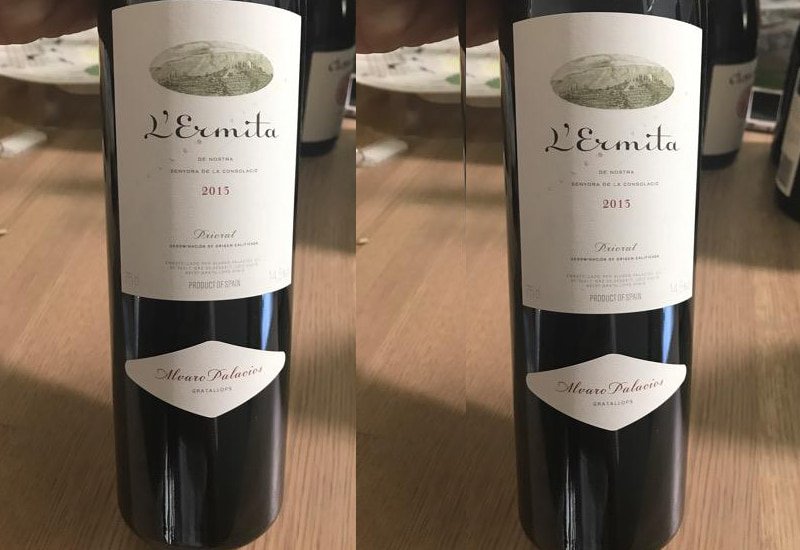
The L’Ermita is made mostly of Garnacha, some Cariñena and a pinch of white grapes. The 2013 vintage is a lively, fresh wine with balanced citric notes of blood orange, grapefruit peel, violets, lilies and Mediterranean herbs.
Price of Alvaro Palacios L'Ermita Velles Vinyes 2013: $2,200+
2. Chateau Rayas Chateauneuf-du-Pape Reserve 1990, Rhone (France)
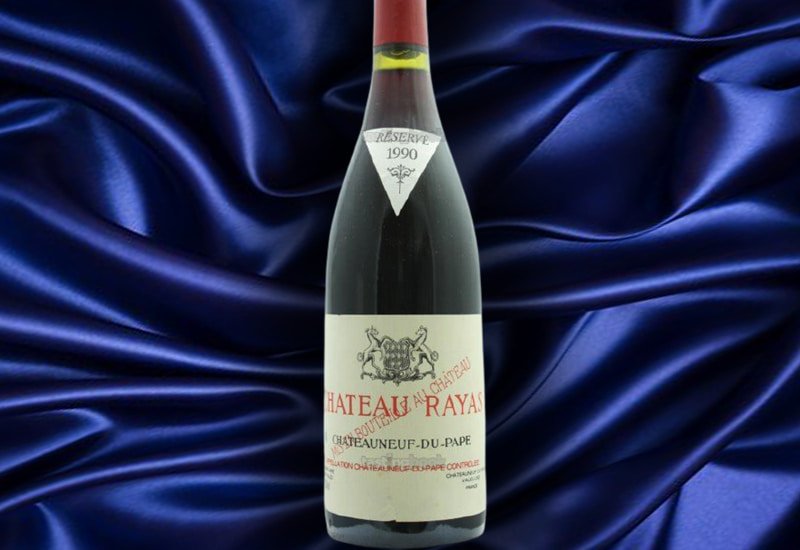
This 1990 vintage Reserve possesses a stunning, intense aroma of kirsch and raspberries, intermingling with sweet spice, roasted herbs, leather and licorice notes.
The palate is full-bodied, ripe and beautifully complex with amazing sweetness, low acidity and a lush yet light texture.
Price of Chateau Rayas Chateauneuf-du-Pape Reserve 1990: $2,300+
3. Sine Qua Non “Ode To E” Grenache 2004, Central Coast (United States)

This SQN red wine offers an amazing nose of sweet caramel, maple, chocolate, black pepper and menthol with deep dark fruit like prune, blackberry, black cherry.
It’s full-bodied with high alcohol, has a medium acidity and medium tannins heading to a long luscious finish.
Price of Sine Qua Non “Ode To E” Grenache 2004: $900+
4. Henri Bonneau Chateauneuf-du-Pape Reserve des Celestins 2010, Rhone (France)
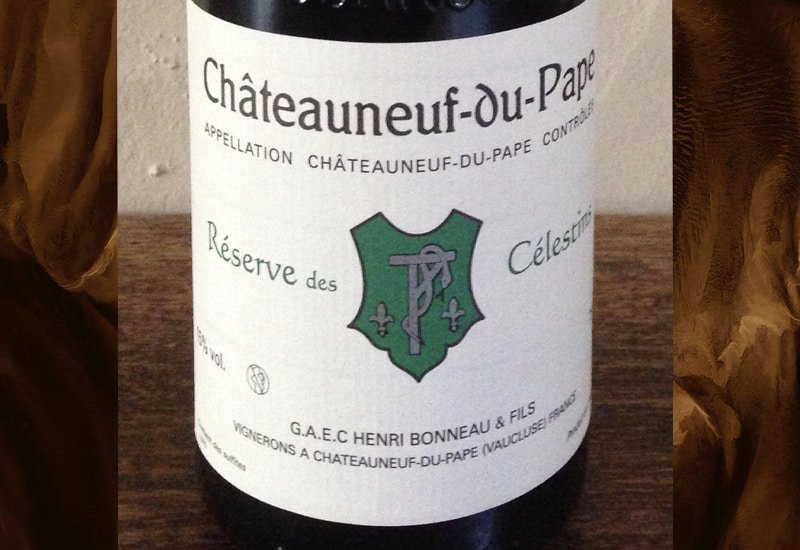
This 2010 vintage Grenache blend is a saturated ruby color, with an intense mineral and spice-accented aroma of candied black and blue fruits, floral pastilles and spice cake.
The palate is velvety and expansive, showing flavors of black raspberry and cherry-cola, sharpened by a juice acidity.
Price of Henri Bonneau Chateauneuf-du-Pape Reserve des Celestins 2010: $600+
5. Domaine de la Mordoree Chateauneuf-du-Pape La Plume du Peintre 2005, Rhone (France)
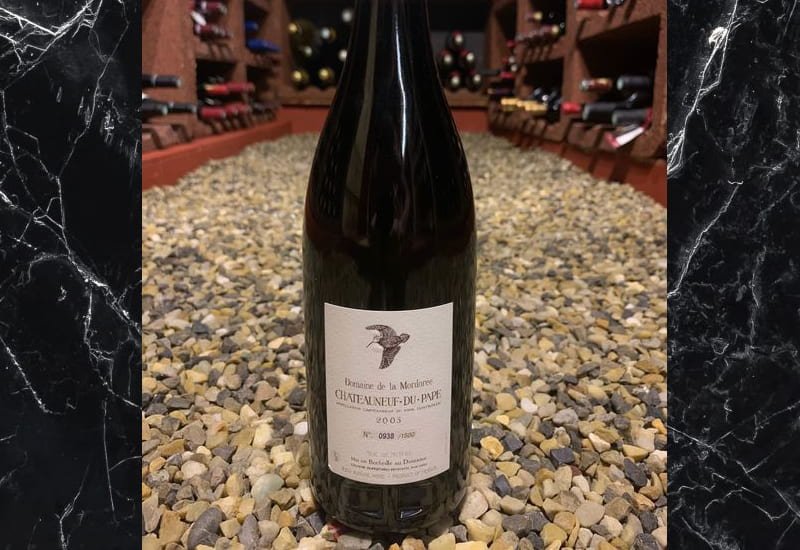
This wine possesses a purity and elegance to match a deep, thrilling concentrated profile on the palate. It offers notes of creme de cassis, toasted spice, graphite and incense that keeps on evolving with time in the glass.
Price of Domaine de la Mordoree Chateauneuf-du-Pape La Plume du Peintre 2005: $500+
6. Chateau Rayas Chateauneuf-du-Pape Pignan Reserve 2010, Rhone (France)
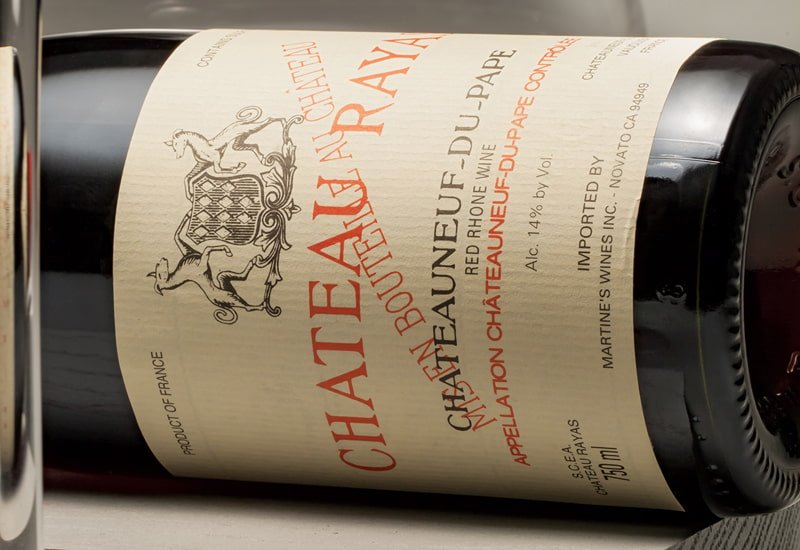
The 2010 Pignan has a bright, medium-depth red color with a nose that widens onto an air of red plum and a hint of pepper. The palate is fine and beguiling with a crisp follow-through, showing floral notes.
Price of Chateau Rayas Chateauneuf-du-Pape Pignan Reserve 2002: $400+
7. Domaine de Marcoux Châteauneuf-du-Pape Vieilles Vignes 1998, Rhone (France)
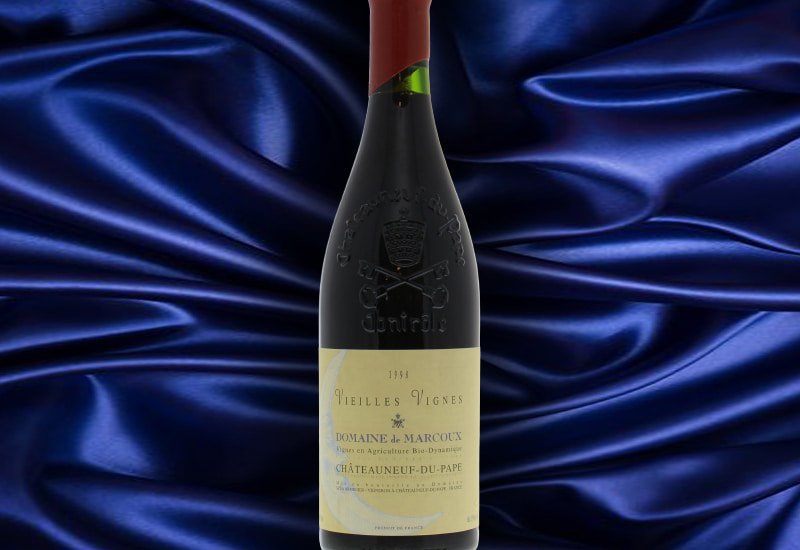
The terroir shines through this extraordinary red wine with notes of red and black fruit, mineral, lead-pencil, plum, leather and subtle wood. It is concentrated, thick-textured and finishes seamlessly with expanding length.
Price of Domaine de Marcoux Châteauneuf-du-Pape Vieilles Vignes 1998: $300+
8. Clos Saint-Jean Chateauneuf-du-Pape Sanctus Sanctorum 2007, Rhone (France)

The 2007 Sanctus Sanctorum is dense, concentrated and thick, with a massive mid-palate and texture. It boasts aromas and flavors of crème de cassis, ground pepper, melted licorice, loamy soil and exotic spice.
Price of Clos Saint-Jean Chateauneuf-du-Pape Sanctus Sanctorum 2007: $1,000+
Does Grenache Wine Age Well?

Most varietal Grenache wines, the GSM blends of Australian McLaren Vale or the lovely rosés of Provence and Tavel are easy-drinking wines and can be enjoyed young.
However, Grenache’s ability to become more complex with age shouldn’t be written off.
With careful winemaking from the fruit of old vines, Grenache can produce a profoundly dense and concentrated wine that ages beautifully. Classic examples of this are the intense, top wines from the ancient vines of Priorat, Châteauneuf-du-Pape, Chateau Rayas, Alvaro Palacios, and Clos Erasmus.
As for buying them, you may be able to find the simpler, everyday versions of the varietal in your local wine shop, but getting hold of the top tier wines like a Châteauneuf-du-Pape may not be so easy.
Instead of going through the hassle of researching and buying fine wine on your own, why not let a trusted wine investment platform like Vinovest help you?
Buy the Best Grenache and Other Wine Bottles through Vinovest

Vinovest is an online wine investment platform that helps you buy, store, and sell a rich Cabernet Sauvignon, Chardonnay, a sumptuous Pinot Noir or any other wine with just a few clicks of a mouse.
How it works
Follow these four simple steps to start investing in wines through Vinovest:
- Go to the Vinovest website and
- Share your investment preferences and risk appetite through a questionnaire.
- Add a minimum of $1,000 to your account.
- Create and track your wine portfolio online.
Benefits of wine investing through Vinovest
Here’s why Vinovest is your best bet!
Buy and sell wines easily at the best prices
With the help of Vinovest’s Artificial Intelligence (AI)-based platform, you can easily buy and sell fine wines from any part of the globe. You’ll be guaranteed the best possible prices as Vinovest buys wine bottles from their trusted network of wineries and wine merchants.
Provenance and authenticity
Every wine bottle is authenticated, and its provenance is checked for you, before you choose to buy them. No concerns about counterfeit bottles here!
Curated portfolio
Your wine portfolio is curated by Vinovest’s professional team of Sommeliers and data scientists, using proprietary financial models based on historical data.
Optimal storage and insurance
Your wines are stored safely in bonded warehouses under optimal conditions, with power back-up to cover emergencies. A comprehensive insurance policy protects your wine cellar.
Access to a global network
Vinovest’s extensive global wine network gives access to upcoming vineyards, limited releases of rare wines, and private sales of wineries.
Low fees and full insurance
Vinovest charges a 2.5% annual fee (this drops to a 1.9% for a portfolio above $50,000). This covers your wine buying, fraud detection, storage, portfolio management, insurance, and selling. Vinovest also offers a full insurance policy at market value - similar to a Federal Deposit Insurance Corporation (FDIC) for your wine bottles.
Wine ownership
Any wine you buy through Vinovest is yours!
Easy delivery
If you want to drink your wine or sell it, Vinovest delivers your wines safely right to your doorstep or to your buyer’s.
Only the Finest Bottles for Your Wine Cellar!
Grenache has proven itself as a “workhorse” grape or a blending grape capable of producing some excellent wines - easy-drinking ones and age-worthy ones!
Pick up an early-drinking Languedoc GSM to grace your wine cabinet or an elegant Priorat and a Cote du Rhone classic to store in your cellar.
Either way, your best bet to buy, store, and sell the finest wines in the world is Vinovest. Why not sign up on Vinovest right away and start building your winning wine portfolio!
